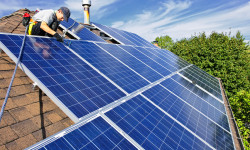Hydro power is a mature and cost-competitive energy source that is renewed annually by rainfall and melted snow, creating streams and rivers that eventually run to the ocean.
Hydro power is a clean, renewable and reliable energy source which converts the kinetic energy from falling water into electricity, without consuming more water than is produced by nature.
Hydro power is the largest single renewable electricity source today, contributing to almost one-fifth of the electricity generation worldwide.
Hydro power helps grid operators to stabilize fluctuations between the demand and supply. Going forward, this role will become even more important in the near future, as the shares of the other variable renewable power (like wind and solar power) will increase dramatically.
Some of the reasons to use more hydro power:
- It is clean and renewable;
- Readily available – to produce electricity on demand;
- Carbon and Nuclear free - leads to decarburization of the overall energy mix;
- Serves as a RES battery - enables greater integration of other variable renewables (wind, solar) to the grid.
Some of the most popular types of hydro power plants are:
- Storage – dam or reservoirs, where water can be stored and lately used to control the water flow, so the hydro power generation as well. They provide flexibility to produce on demand and reduce dependency on the variability of inflows. Such storage plants can also be used for flood protection and irrigation services. The reservoirs may additionally offer some recreational opportunities, such as swimming, rafting, kayaking and boating. Unfortunately, damming rivers may disrupt or fully destroy the river habitats. Some fish, like salmon, may be prevented from swimming upstream to spawn. Modern technologies like fish ladders exist to help salmon go up over dams and enter upstream spawning areas, but the presence of hydroelectric dams could change their migration patterns and hurts their populations.
- Run-of-river – captures the energy from rivers or streams, without using any dams or reservoirs. Still some may include short-term storage, which allows them to short-term adapting (hours or just few days) to the demand profile, but in general most of them are mainly driven by the natural flow of the river or the stream. Their generation highly depends on the weather conditions (precipitation and runoff), and normally has substantial daily, monthly, seasonal and yearly variations.
- Pump & Storage – an effective technology that allows electricity storage for the moment where it will be needed the most (high demand). When electricity supply exceeds the demand (low cost generation) they pump water from a lower reservoir into an upper reservoir. Opposite, when the demand exceeds the supply (higher value generation), water is released to flow back from the upper reservoir through turbines and to generate electricity.



